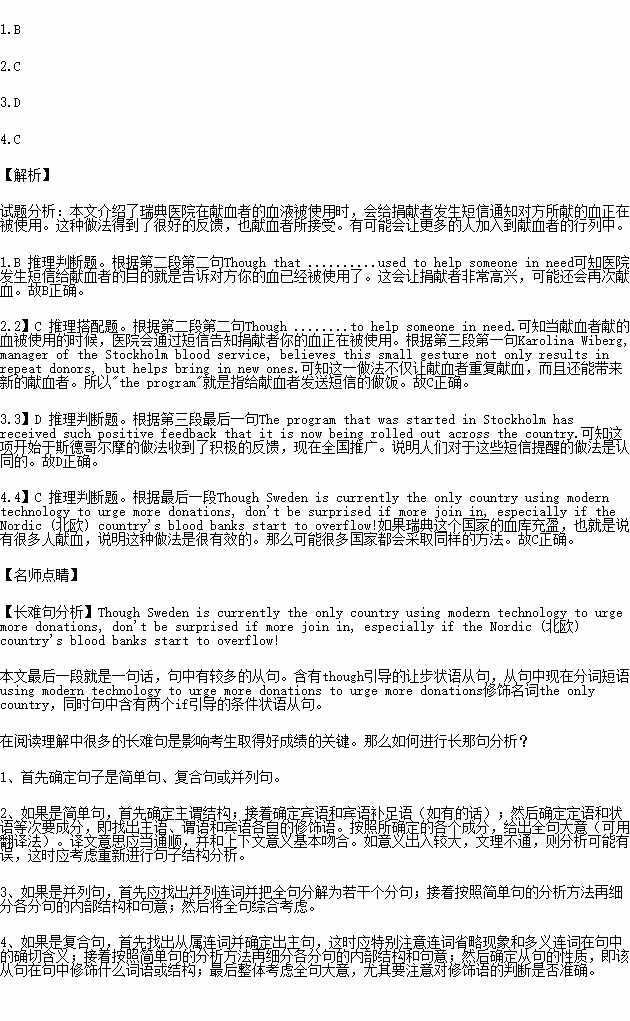题目内容
Most people think about donating blood. However. Very few actuallv do it. Even the most consistent ones donate an average of just three to four times during their lifetime. Now the officials in Sweden are trying to change the trend with the help of modern-day technology.
The encouragement to donate again begins shortly after the donor leaves the clinic when he/she receives a "thank you" text. Though that certainly helps them feel appreciated, what is even more pleasing is the text they receive each time their blood is used to help someone in need.
Karolina Wiberg, manager of the Stockholm blood service, believes this small gesture not only results in repeat donors, but helps bring in new ones. The program that was started in Stockholm has received such positive feedback that it is now being rolled out across the country.
However, Swedish officials are not stopping there. They are also encouraging local clinics to publish the exact levels of the different blood groups they have at any given time on their websites. This allows potential donors to realize that their blood can make a difference in saving someone ' s life.
While all these outreach programs are great, busy citizens, even the ones with the best intentions have to be occasionally reminded. In order to jog their memories, officials ask people for authorization to send them text, Facebook, and e-mail reminders. Though that may sound disturbing, the citizens do not seem to mind, given that the messages are light-hearted and fun-things like "We won't give up until you bleed."
Though Sweden is currently the only country using modern technology to urge more donations, don't be surprised if more join in, especially if the Nordic (北欧) country's blood banks start to overflow!
1.Why is another text sent to blood donors after a "thank you" one?
A. To ask them for authorization.
B. To inform them their blood is used.
C. To remind them to donate blood immediately. '
D. To tell them the levels of blood groups.
2.What does "the program" in paragraph 3 refer to?
A, Publishing information about blood donation.
B. Giving Facebook reminders to citizens.
C. Sending text messages to blood donors.
D. Providing people with blood service.
3.What do people think of blood donation reminders?
A. Disturbing. B. Memorable.
C. Authentic. D. Acceptable.
4.What can we infer from the last paragraph?
A. Sweden will stop urging blood donation.
B. Sweden has benefited little from its program.
C. More countries may follow Sweden's example.
D. Nordic blood banks are in great need of blood.
 口算题卡加应用题集训系列答案
口算题卡加应用题集训系列答案
